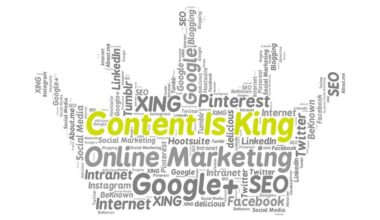The Impact of Eco-Friendly Packaging on Brand Awareness
In recent years, the rise of environmental consciousness has dramatically altered consumer expectations regarding sustainability. Brands that embrace eco-friendly packaging can significantly enhance their brand awareness while fostering a positive reputation. One way that eco-friendly packaging impacts brand awareness is by aligning with the principles of sustainability that consumers increasingly prioritize. This alignment influences customer perceptions and can lead to increased loyalty and preference for brands that demonstrate environmental accountability. Furthermore, businesses adopting sustainable practices often become a part of consumers’ narratives, as buyers actively seek products that reflect their values. Eco-friendly packaging solutions, such as biodegradable materials, not only minimize the ecological footprint but also serve as a powerful marketing tool. Such brands frequently receive enhanced visibility in media coverage, as sustainability stories resonate well with audiences. Social media platforms, in particular, amplify these narratives, resulting in greater organic reach and engagement. As customers share their environmentally friendly purchases with their networks, awareness spreads. Ultimately, eco-friendly packaging acts as a catalyst for brand recognition in increasingly saturated markets where differentiation is essential.
The Role of Transparency in Packaging
Transparency in packaging can significantly enhance consumer trust and brand awareness. Today’s consumers are savvy, seeking brands that are open about their practices and ingredients. When a brand opts for eco-friendly packaging, transparency becomes critical. Brands must communicate their sustainability efforts and the benefits of their packaging choices effectively. Clear labeling can demystify the materials used and their impact on the environment. For instance, packaging featuring certifications such as FSC or recycled content helps guide consumer preferences. Engaging storytelling about the sourcing and manufacturing processes can also enhance brand awareness. Brands that provide detailed information about their efforts are more likely to build strong connections with their consumers. Moreover, consumers love sharing brands that resonate with their values on social media platforms. Creative marketing campaigns emphasizing eco-friendly packaging can lead to viral movements, further amplifying brand recognition. When consumers perceive a brand as ethical and environmentally responsible, it strengthens their emotional connection. Furthermore, this connection translates into measurable sales growth as customers actively seek to support brands that align with their perceived values of sustainability.
In the current landscape, competition is fierce, making it essential for businesses to find effective differentiation strategies. Eco-friendly packaging serves as a unique selling proposition (USP) that can set a brand apart in crowded markets. Many consumers now actively search for brands that prioritize sustainability, making eco-friendly packaging a vital element of competitive marketing strategies. Major brands have recognized this shift and are adapting their packaging accordingly. A strong USP, grounded in responsible packaging, enhances brand visibility in retail environments. Customers can quickly identify eco-friendly products through distinctive packaging designs, thus improving brand recall. This form of packaging not only denotes quality and sustainability but also appeals to a growing demographic willing to pay more for environmentally responsible products. Effective design techniques, including minimalist aesthetics and nature-inspired graphics, can elevate perceived brand value. Furthermore, incorporating QR codes or augmented reality experiences related to sustainability can captivate attention and engage consumers. As brands effectively communicate their commitment to eco-friendly practices through innovative packaging, they cultivate an image of reliability. Such branding strategies contribute substantially to increased market share and brand awareness.
The Economic Benefits of Sustainable Packaging
Embracing eco-friendly packaging not only supports environmental efforts; it also offers tangible economic benefits for brands. By utilizing sustainable materials, companies can often reduce material costs through bulk purchasing and efficient production. Additionally, many eco-friendly solutions are associated with reduced energy consumption, thus lowering overall operational expenses. Investing in sustainable packaging alternatives can also mitigate risks arising from legislation surrounding plastic use and waste management. As regulatory pressures mount globally, brands proactive in using eco-friendly packaging will not only comply but also position themselves favorably against penalties and taxes. Furthermore, adopting sustainable packaging can drive consumer demand, creating new market opportunities. Brands that highlight their commitment to sustainability often find increased customer loyalty, fostering long-lasting relationships. Loyalty, in turn, translates into repeat sales and further brand advocacy. Additionally, eco-friendly packaging serves as an effective marketing tool, enabling brands to tap into the relevant boom in green consumerism. The positive attention resulting from adopting eco-friendly practices is instrumental in construing a brand image that resonates with consumers, resulting in increased market share and awareness.
Another noteworthy advantage of eco-friendly packaging involves enhancing customer engagement through innovative designs and storytelling. Brands adopting sustainable approaches often create more engaging and relatable visual content that resonates with consumers. For instance, packaging that reflects organic materials or traditional craftsmanship captivates potential buyers. When consumers encounter unique designs or materials, their purchasing experience becomes more memorable, cultivating excitement around the brand. Engaging storytelling integrated with packaging can also effectively convey a brand’s commitment to sustainability. Brands can share intriguing narratives that explain the journey towards eco-friendly practices, inviting customers to participate in their mission. Educational content communicated through packaging can also provide insights into larger sustainability issues, fostering awareness and encouraging responsible consumption practices. Furthermore, this emphasizes a brand’s dedication to transparency, which appeals strongly to today’s conscientious consumers. Through interactive elements, such as cross-channel marketing strategies or QR codes directing to sustainability initiatives, brands can strengthen the connection with their audience. Overall, innovative, story-driven, eco-friendly packaging fosters a sense of community among consumers who value sustainability, amplifying brand loyalty and awareness.
Long-Term Brand Impact and Eco-Friendly Packaging
The long-term impact of eco-friendly packaging on brand awareness cannot be overstated. As consumers increasingly gravitate toward brands that share their values, businesses that prioritize sustainability can expect sustained growth. Companies adopting eco-friendly practices are not merely participating in a trend; they are shaping a movement. Eco-friendly packaging solidifies consumers’ perceptions of brands as responsible and eco-conscious. In the modern marketplace, aligning with sustainable practices ensures consumer loyalty and repeat sales, creating a solid foundation for future growth. Eco-friendly packaging can become a crucial part of a brand’s identity. As brands differentiate themselves through sustainability, they can leverage this advantage in public relations and marketing efforts. Such branding resilience leads to a more enduring market presence. Additionally, brands with a sustainable focus often enjoy a broader appeal across demographics, as consumers of diverse backgrounds increasingly favor environmentally responsible products. The long-term investment in eco-friendly packaging fosters enduring relationships across generations. Over time, brands become synonymous with sustainability in consumer minds, resulting in ongoing differentiation and heightened brand recognition in a continuously evolving marketplace.
To summarize, integrating eco-friendly packaging strategies presents an opportunity to enhance brand awareness significantly. As sustainability qualifies as a growing priority among consumers, brands employing eco-friendly packaging stand to gain much more than just a competitive advantage. The implementation of sustainable practices strengthens customer and brand relations, fosters loyalty, and positively impacts overall market positioning. Providing transparency through eco-friendly packaging builds trust, making customers feel more content with their purchases. Brand narratives rooted in sustainability create authentic connections and a shared purpose that encourages consumers to advocate for the brand. The economic advantages of adopting eco-friendly packaging are clear, with reduced operational costs while capturing market share among increasingly conscious consumers. By engaging customers and creating impactful narratives around eco-friendly practices, brands solidify their reputation as responsible, responsible, and innovative. The long-term benefits associated with environmentally friendly packaging are substantial, generating visibility and loyalty that stretch well into the future. As the eco-conscious movement continues to grow, brands prioritizing sustainability can expect heightened brand awareness that will undoubtedly contribute to their ongoing success.
Key Takeaways
In conclusion, brands focused on eco-friendly packaging cultivate enhanced brand awareness and foster deeper consumer connections. The rise in environmental consciousness has paved the way for innovative sustainability strategies that disrupt traditional marketing paradigms. Transparent communication about sustainable efforts encourages trust while unique packaging designs elevate perceived value. Additionally, brands that position themselves as eco-conscious gain competitive advantages and increased market share. The economic benefits of sustainable packaging add further rationale for brands to adopt these practices. Innovative storytelling combined with eco-friendly products significantly resonates with today’s consumers, enhancing loyalty and engagement. The long-term ramifications of embracing ecology-centered approaches are vast, as such initiatives define brand identity and cultivate community among conscious consumers. Consequently, incorporating sustainable packaging is not merely a marketing strategy; it represents an integral component of responsible brand development, ensuring relevance in an evolving market while contributing positively to environmental health.


